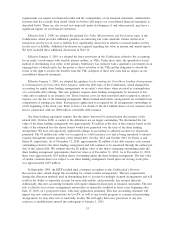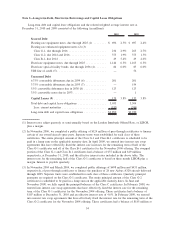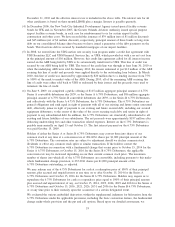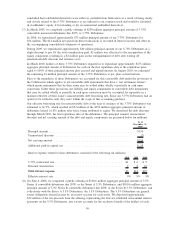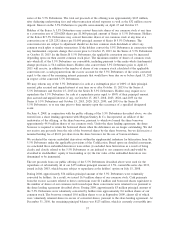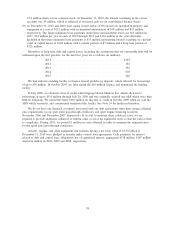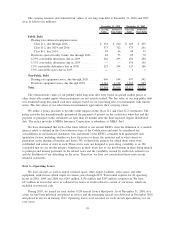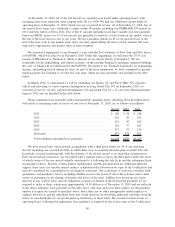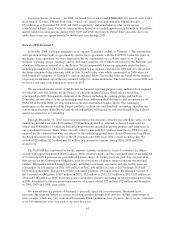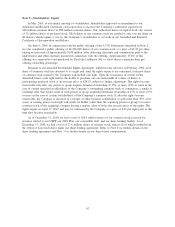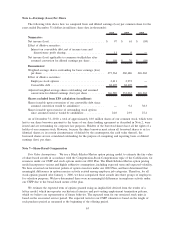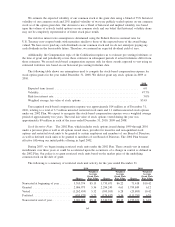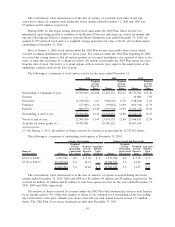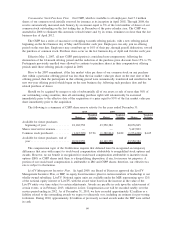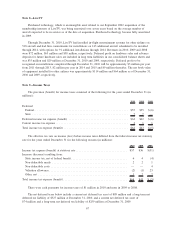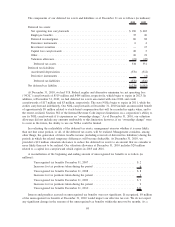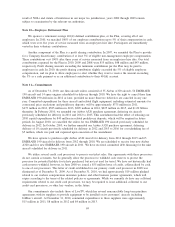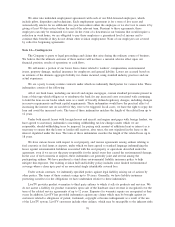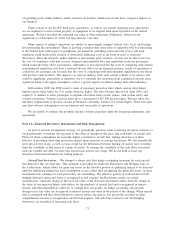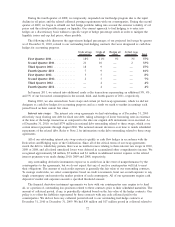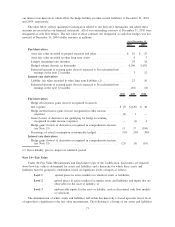JetBlue Airlines 2010 Annual Report Download - page 72
Download and view the complete annual report
Please find page 72 of the 2010 JetBlue Airlines annual report below. You can navigate through the pages in the report by either clicking on the pages listed below, or by using the keyword search tool below to find specific information within the annual report.
Note 6—Earnings (Loss) Per Share
The following table shows how we computed basic and diluted earnings (loss) per common share for the
years ended December 31 (dollars in millions; share data in thousands):
2010 2009 2008
Numerator:
Net income (loss) ................................... $ 97 $ 61 $ (84)
Effect of dilutive securities:
Interest on convertible debt, net of income taxes and
discretionary profit sharing ........................ 11 9 —
Net income (loss) applicable to common stockholders after
assumed conversion for diluted earnings per share ......... $ 108 $ 70 $ (84)
Denominator:
Weighted-average shares outstanding for basic earnings (loss)
per share ....................................... 275,364 260,486 226,262
Effect of dilutive securities:
Employee stock options ............................ 2,611 2,972 —
Convertible debt .................................. 68,605 68,605 —
Adjusted weighted-average shares outstanding and assumed
conversions for diluted earnings (loss) per share . ......... 346,580 332,063 226,262
Shares excluded from EPS calculation (in millions):
Shares issuable upon conversion of our convertible debt since
assumed conversion would be antidilutive ............... — 9.2 38.3
Shares issuable upon exercise of outstanding stock options
since assumed exercise would be antidilutive ............. 24.0 23.9 27.2
As of December 31, 2010, a total of approximately 18.0 million shares of our common stock, which were
lent to our share borrower pursuant to the terms of our share lending agreement as described in Note 2, were
issued and are outstanding for corporate law purposes. Holders of the borrowed shares have all the rights of a
holder of our common stock. However, because the share borrower must return all borrowed shares to us (or
identical shares or, in certain circumstances of default by the counterparty, the cash value thereof), the
borrowed shares are not considered outstanding for the purpose of computing and reporting basic or diluted
earnings (loss) per share.
Note 7—Share-Based Compensation
Fair Value Assumptions: We use a Black-Scholes-Merton option pricing model to estimate the fair value
of share-based awards in accordance with the Compensation-Stock Compensation topic of the Codification, for
issuances under our CSPP and stock options under our 2002 Plan. The Black-Scholes-Merton option pricing
model incorporates various and highly subjective assumptions, including expected term and expected volatility.
We have reviewed our historical pattern of option exercises under our 2002 Plan, and have determined that
meaningful differences in option exercise activity existed among employee job categories. Therefore, for all
stock options granted after January 1, 2006, we have categorized these awards into three groups of employees
for valuation purposes. We have determined there were no meaningful differences in employee activity under
our CSPP due to the broad-based nature of the plan.
We estimate the expected term of options granted using an implied life derived from the results of a
lattice model, which incorporates our historical exercise and post-vesting employment termination patterns,
which we believe are representative of future behavior. The expected term for our restricted stock units is
based on the associated service period. The expected term for our CSPP valuation is based on the length of
each purchase period as measured at the beginning of the offering period.
63


